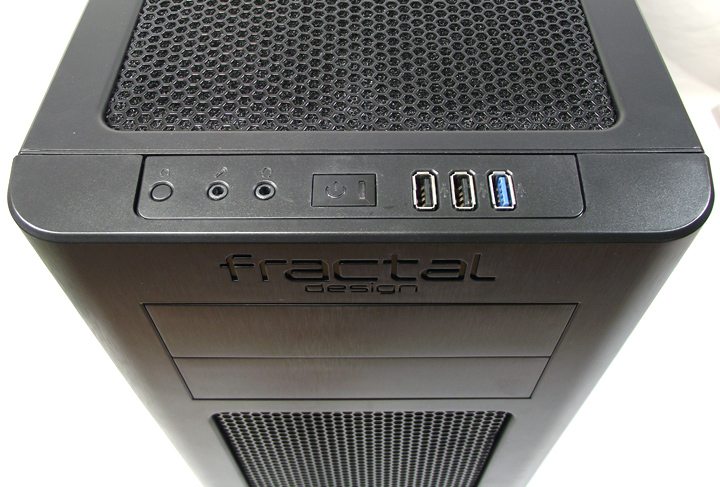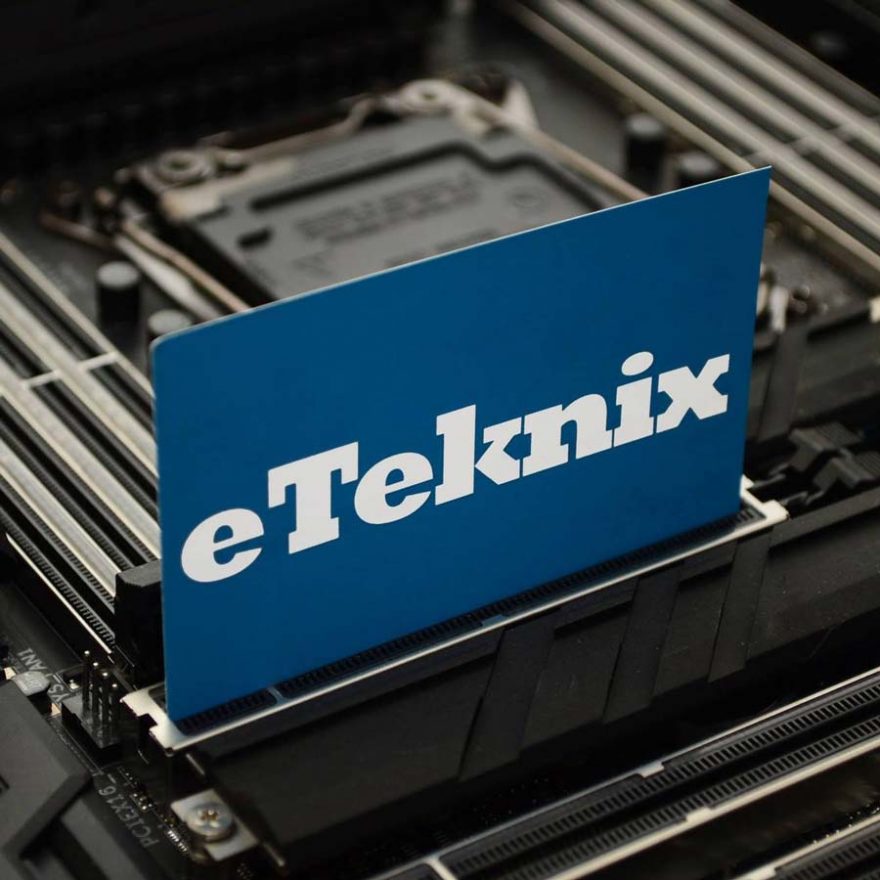Fractal Design Arc Midi Mid-Tower Chassis Review
Luke Hill / 13 years ago
The left side of the case features the same aluminium-style design which is present on the rest of the case. Fractal Design have successfully implemented a 180/140mm fan mount without ruining the appearance of the side panel. The lack of a dust filter may deter some users from using this mounting point anyway.
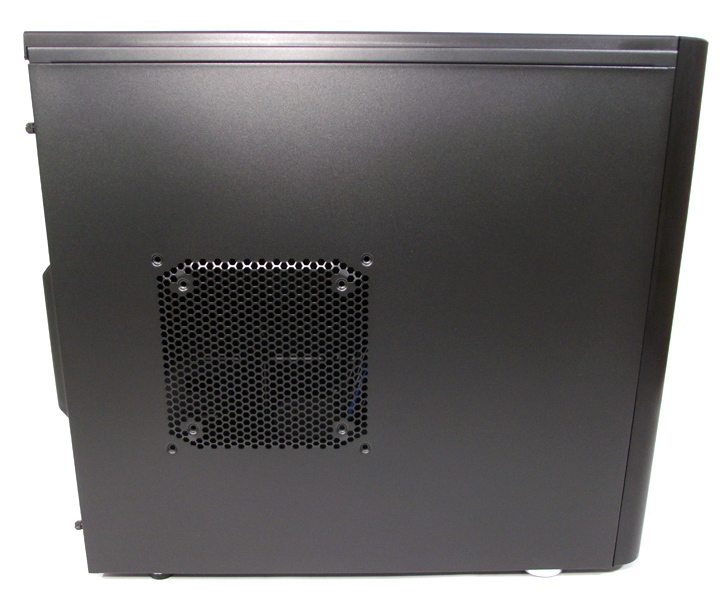
A right side panel which is plain in design also shares its style with the rest of the case. 2 easily removable thumb screws secure each side panel in place negating the requirement for a screwdriver to open them.
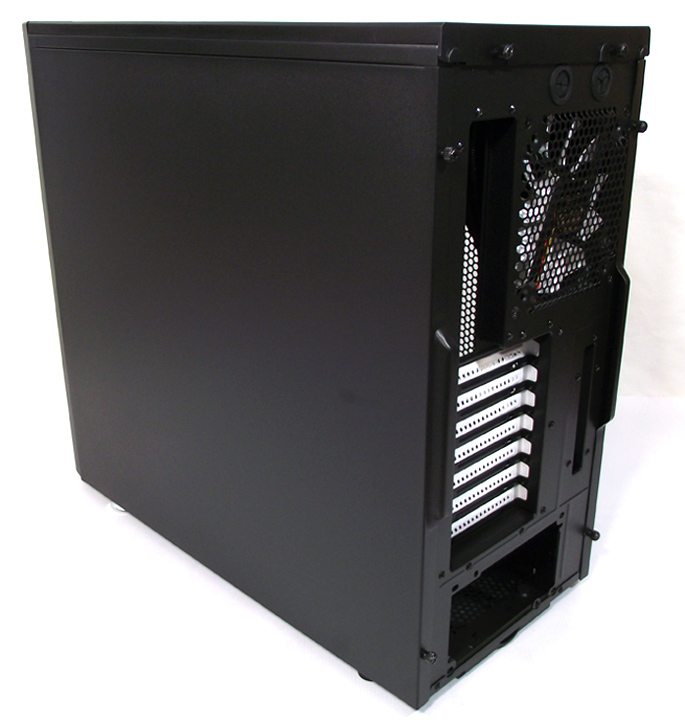
Fractal Design’s large logo is situated at the summit of the Arc Midi’s front panel, above both 5.25″ bay covers. The large dust-filtered, mesh cover precedes the mounting location for a pair of 140mm fans, one of which is supplied.
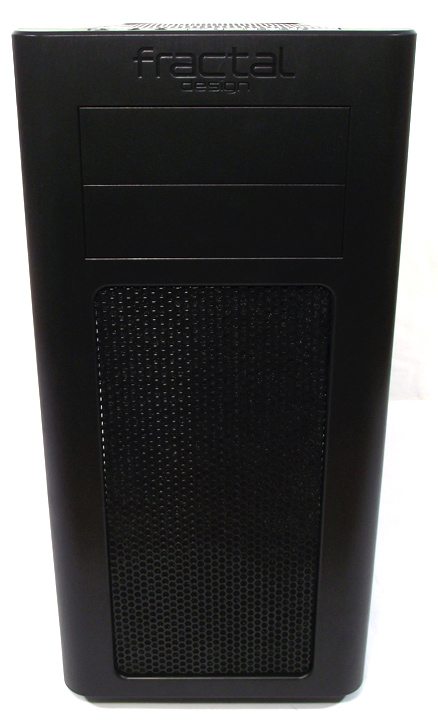
7 white, horizontally orientated PCI shields as well as an 8th, vertically orientated PCI shield contrast the black rear. A view of the white fan blades also works as an attractive contrast to the norm. The vertically orientated PCI slot will be perfect for housing the PCI fan control knob, ensuring it won’t interfere with the practical expansion slots.
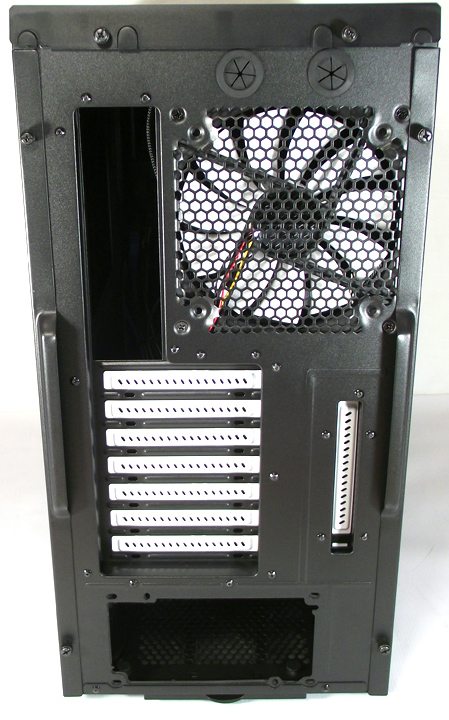
4 rubber-bottomed feet ensure that your precious system isn’t going to be going for an unexpected trip any time soon. A large and easily removable dust filter prevents dust from entering the bottom mounted PSU or the chassis internals via the floor mounted 120/140mm fan.
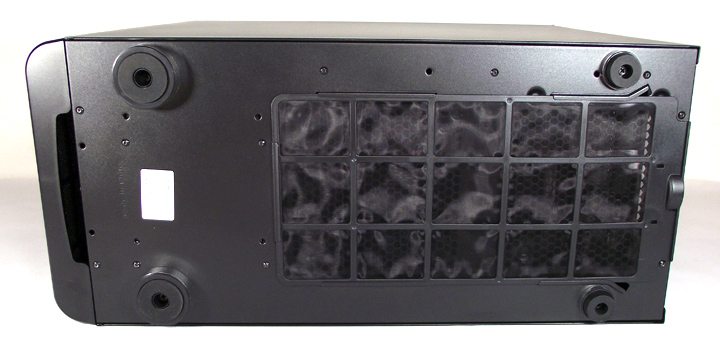
A large dust-filtered, mesh cut-out is prevalent on a top panel which is attached via 2 thumb screws at the rear. This filter covers mounting holes for a variety of fan combinations instead of the single 140mm fan included. The thick foam filter also acts as a noise reduction measure, isolating any additional vibrations.
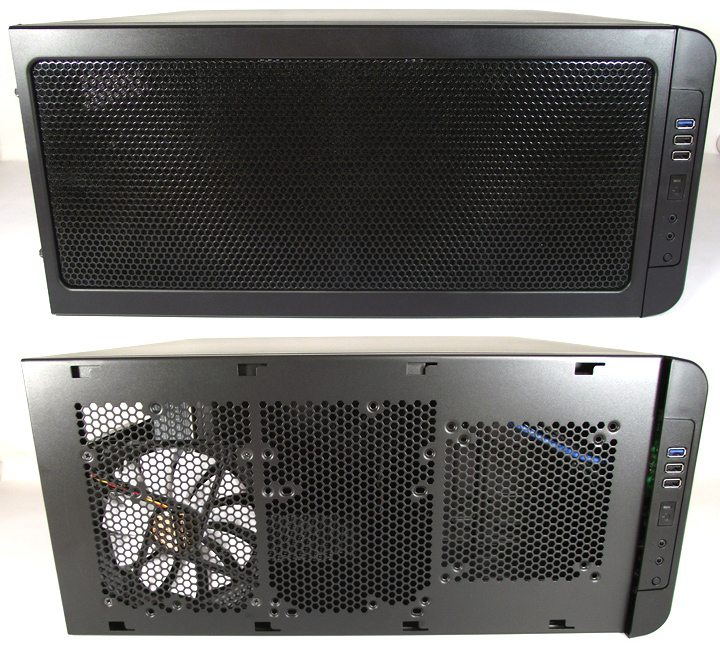
A pair of USB 2.0 ports, a single USB 3.0 port, microphone and headphone jacks, the reset button and a power button which doubles up as the power LED are the connections employed on the front panel IO location. The inclusion of another USB 3.0 port would have been the sensible decision seeing as the internal header provides bandwidth for 2 ports and the IO panel has plenty of room to spare.
